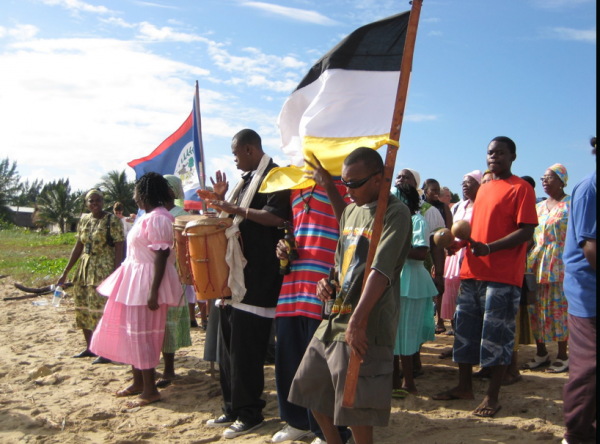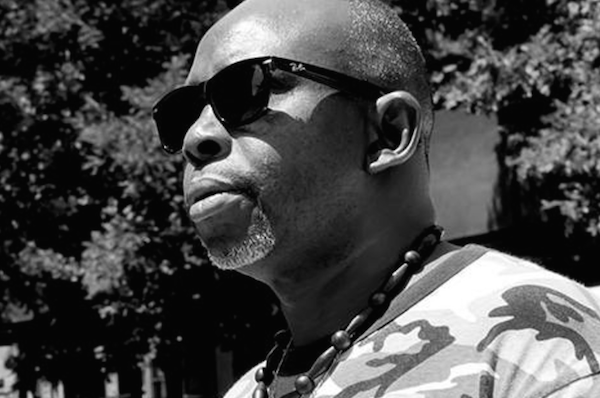
A painting of Pen Cayetano and the original Turtle Shell Band
There is a thriving music scene that saw a revival in the late ’90s, mostly consisting of Garifuna artists performing around the country for other members of the community, says Pablo Blanco, a Bronx-based Garifuna DJ and promoter. “We’re trying to change that and get more exposure outside of our own community,” he says.
To celebrate Garifuna Settlement Day, Blanco’s management company, Elite Carib International, is promoting a show on Nov. 29 at Silvana in Harlem that will feature James Lovell. The concert will take on extra special significance in commemorating the life of Paul Nabor, a legendary Garifuna musician, born in Punta Gorda, Belize, who passed away in mid-October. Nabor is often credited with popularizing Paranda, a genre of traditional Garifuna music.
Paranda is one of the two most popular genres of Garifuna music. It is a folk style usually consisting of acoustic guitar and drums and percussion, along with call-and-response singing. It is very melodic and emphasizes musicianship and lyrical delivery, often with social commentary.
Punta is the other popular genre. Punta is a festive uptempo dance music and style, with some similarities to Soca music. The Garoun drum (or the primera) leads the rhythm and the segunda, or bass drum, keeps the tempo. The dance style is all about the waistline, which follows naturally from its roots as a fertility and courtship dance.
An offshoot of Punta is Punta Rock music, which is a contemporary Garifuna genre that uses turtle shells as percussion instruments to provide the backing rhythm. It also takes some elements from other genres around the Caribbean. Credit for its creation is often given to Pen Cayetano, who developed the sound in Belize in the late 1970s with his Turtle Shell Band. (As far back as the 1960s though, there were groups that incorporated electrified instruments into the arrangement of Garifuna music, such as the Honduran Punta groups Los Aladinos and Black Sunday.)
Another traditional genre is called Hungu-Hungu, which is a more spiritual music played with drums. It is very slow, solemn and is polyrhythmic, or in compound time of 6/8. Another genre is called Wanaragua (literally meaning “mask”) and is a warrior dance, which is more commonly known as Jankunu.
If you’re in the NYC-area, we highly suggest you grab tickets to the Nov. 29 show, which will showcase all of the genres above.
Until then, LargeUp asked Lovell and Blanco to name a handful of must-know Garifuna artists and songs. Click through the selections over the following pages in order to get more familiar with this special Caribbean music and culture.









